
8D ASSOCIATION
The 8D Association is dedicated to promoting the history of the railways of South Lancashire, Merseyside and North Cheshire.
The St Helens and Runcorn Gap Railway (SH&RGR)
1833 – 1982.
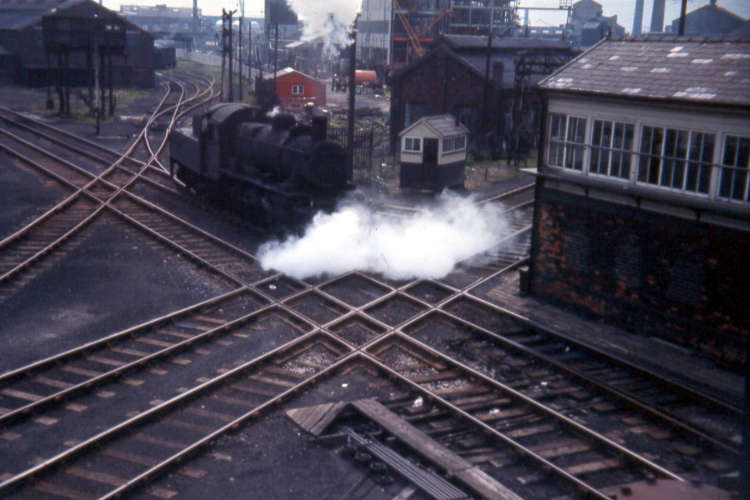
Introduction.
It is likely that Widnesians of a certain age will remember the Widnes to St Helens Railway which was one of the first lines to open in the Country and which used to cut through right through the town from what is now Spike Island up to the Borough Boundary at a point north of Derby Road Bridge. The year 2008 marks the 175th Anniversary of the Official Opening of the line on the 21st February 1833. The last sections of it at the Widnes end closed on the 18th April 1982 which is more than a quarter of a century ago.
The line contained many local landmarks which have long since vanished such as the St Helens Canal Swingbridge, Ann Street Level Crossing, Lugsdale Road Bridge, The Bradley Passage Footbridge, Halton View Bridge and Derby Road Bridge. What is probably not realised is that without the opening of this line in 1833 Widnes may never have developed as a town. Prior to line being built only scattered settlements existed in the area. This booklet sets out to explain a little about the history of the Widnes and St Helen’s Railway within the Boundaries of what became Halton in 1974.
It was located on land to the north of the CLC main line to the east of the point where it passed under the London & North Western Railway (LNWR) Edge Hill and Garston line. Allerton station was to the west of the shed on the LNWR line.
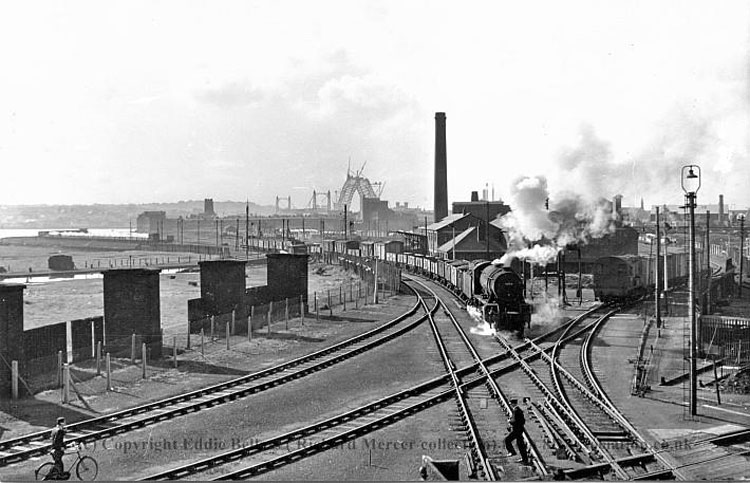
Photo by Eddie Bellass (from the Richard Mercer collection).
The St Helens and Runcorn Gap Railway 1833 – 1845.
The Industrial Revolution which began in the 18th Century resulted in coal becoming increasingly important as a fuel source. Lancashire had plenty of coal that could easily be worked especially around the St Helens area. However coal owners had a problem, how could they get the coal to the industries in the big cities such as Liverpool and Manchester. To solve this problem the Sankey Brook Navigation Canal, later to be known as the St Helens Canal was opened in 1757 between St Helens and the River Mersey at what is now known as Fiddlers Ferry Marina.
The Canal served the Coal Owners well but it was slow and during periods of extreme winter cold or hot summer drought it was unusable. In 1825 the world famous Stockton and Darlington Railway had opened its prime function being to haul coal from mines to ships on the north east coast. The line had proved to be very successful and the idea of railways as an effective form of transport was born.

Photo by Eddie Bellass (from the Richard Mercer collection).
The story of the Britain’s first main line railway that was built to carry passengers as well as freight, the Liverpool & Manchester Railway which opened in 1830, is both well known and well documented. During the construction of the Liverpool and Manchester Railway in 1829 a group of local industrialists arranged for a survey to be carried out between Cowley Hill Colliery, which was just to the north of St Helens, and the River Mersey at Runcorn Gap. They wanted to find a location where a dock capable of taking vessels of 30 tons could be constructed. The survey was conducted by Charles Blackner Vignoles who had also undertaken survey work for the Liverpool and Manchester Railway. A route was determined and an estimated cost of £119,980 to build the line was put forward. In January 1830 a prospectus was issued and a subscription list for 1200 shares at £100 each was opened at the Fleece Inn in St Helens. Shares sold rapidly and on the 11th June 1830 Peter Greenall of the famous brewing family was elected Chairman of a Board of ten directors. Whilst all this had been going on authorisation for the St Helens & Runcorn Gap Railway had been sought. A bill for its construction had been posted on the 16th February 1830 and Royal assent was granted on the 29th May 1830.
The St Helens and Runcorn Gap Railway was born. Charles Blackner Vignoles was appointed as engineer to the project on a salary of £650 per year on the 15th June 1830 and shortly afterwards work on the scheme began. Work progressed slowly and not without difficulty and costs overran but on the 28th November 1832 a train carrying coal was able to pass along the entire length of the line from St Helens to Runcorn Gap. Final works were completed and the line was officially opened on the 21st February 1833. Unfortunately the dock was not completed by the opening date much to the annoyance of the board. It took until August 1833 before it could be brought into use and allow the railway to meet its full potential. The Sankey Brook Navigation Canal company had realised that the new railway would be a threat to their business and they had obtained authorisation to build an extension to Runcorn Gap to a point that would be adjacent to the railways dock. This extension opened on the 24th July 1833.
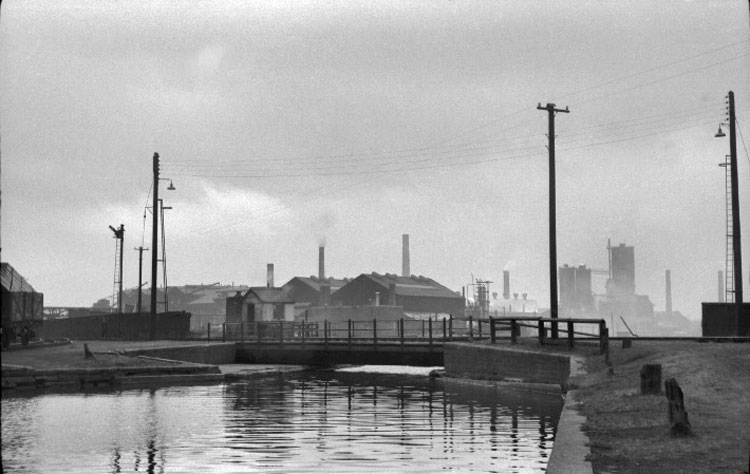
Photo by Harry Arnold MBE (/Waterway Images). (To view more of Harry’s Waterway Images click here )
From Widnes Dock the line headed north crossing the canal extension by means of a swing bridge. It then became a single track that climbed steeply through what at that time was agricultural land. Between what would later become the site’s of Appleton and Farnworth & Bold Station stations the line was so steep that trains had to be hauled up and lowered down by ropes that were worked by stationary steam engines. The system was called an inclined plane and the line had two in total the other being at Sutton in St Helens. The inclined plane’s were a considerable inconvenience as they could only handle four wagons at a time. At first passenger services were not operated down to Runcorn Gap but public demand led to the railway company hiring two passenger coaches from the Liverpool and Manchester Railway at £1 per month and a passenger service was introduced in September 1833. The coaches were attached to the rear of coal trains to keep costs down. At this time a passenger station called Runcorn Gap was established just north of the canal swing bridge.
During the early years the line was not a financial success. This was caused when a price war broke out between both the canal and the railway company, to the detriment of them both. Prices for coal fell to as low as 2d per ton. This situation could not continue.
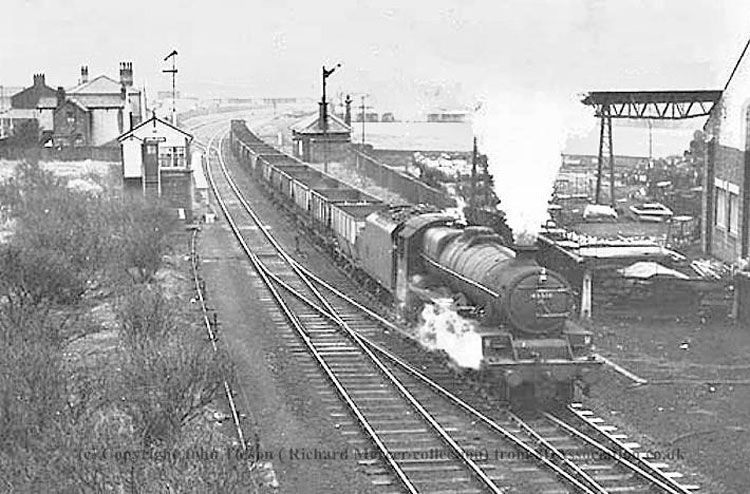
Photo by John Tolson. from the Richard Mercer collection.
In 1850 a start was made on an extension of the line from Runcorn Gap (Widnes) to Garston. Larger ships could reach Garston more easily and the railway company wanted to take advantage of this. They also had ambitions to reach Liverpool. By the 21st May 1851 a sharp curve connection had been made to the original line just north of the canal at what would become known as Widnes Dock Junction. Also track had been laid as far as Ditton Mill. On the 1st of July 1852 the extension to Garston formally opened for business. A new Runcorn Gap Station was opened on the west side of the Waterloo Crossing which led to the closure of the original 1833 station. During the construction of the Garston extension permissions had been sought to build a line from Widnes Dock Junction to Warrington. Work had commenced quickly and by the 1st February 1853 the line was completed.
The opening of the Garston extension and the Warrington line created the most unusual feature of the railway network at Widnes and something that was not common throughout the British Isles, a flat crossing. Basically the Garston and Warrington lines became one route which crossed on the level the original St Helens line at Widnes Dock Junction. A link from the north to the west allowed trains to travel direct between St Helens to Garston and a link from the east to the south allowed trains to travel between Warrington to Widnes Dock but trains could not travel direct between St Helens and Warrington. This unusual feature at Widnes Dock Junction would become a serious congestion problem as traffic levels built up.
By the early 1860’s passengers could travel westwards from Runcorn Gap to Liverpool, by changing to a steam ship at Garston. They could travel eastwards to Manchester, London Kings Cross and other points as other companies lines had connected with the Warrington extension at Warrington Arpley. The St Helens Canal and Railway Company now had routes of national significance and this did not go un-noticed by larger railway companies.

Photographer unknown. (Reproduced with permission of St Helens MBC libraries, Local History & Archives Section).
The London & North Western Railway (LNWR) 1864 – 1923.
By the 1860’s lines were opening throughout the Country at a phenomenal rate. Locally and of significance to the St Helens Canal and Railway Company was the London & North Western Railways (LNWR) plans for lines from Edge Hill to Garston. This line would provide a direct link to Liverpool but it would not be in the interests of the St Helens Canal & Railway Company. They tried to promote schemes of their own but by 1860 they had been forced to enter discussions with the LNWR. The discussions resulted in the LNWR leasing the Garston to Warrington line from the 1st September 1860. The LNWR paid £5,000 for the first year and £12,000 per year from 1861. The matter did not end there however and on the 29th July 1864 an act was passed allowing the St Helens Canal & Railway Company to be absorbed by the LNWR. The transfer of ownership took place from the 31st July 1864. The Widnes Railway network was now part of the LNWR empire. On the 1st September 1864 they renamed Runcorn Gap station as Widnes. Finally Widnes had been recognised as a distinct entity.
The LNWR had set aside £100,000 for improvements to its newly acquired Railways in Widnes. Of pressing concern was Widnes Dock Junction and the Waterloo crossing. The proposed solution was to build a ‘deviation line’ to the north of the original line from a point to the west of the Widnes Station, where the current Runcorn and Widnes Bridge approach Road now crosses the line, to Carterhouse Bridge. The ‘deviation line’ would climb onto an embankment so that it could cross Victoria Road and the original St Helens line by Bridges therefore easing congestion. The line which was to be just under one and a half miles in length was authorised on the 5th of July 1865 and opened for traffic on the 1st November 1869. On the 1st March 1870 a new station opened on the ‘Deviation’. The station was located on the east side of Victoria Road and it was named Widnes, its predecessor at Waterloo Crossing closed to passenger services. The ‘Deviation Line’ was provided with a connection to the St Helens line so that passenger services could use the new station.
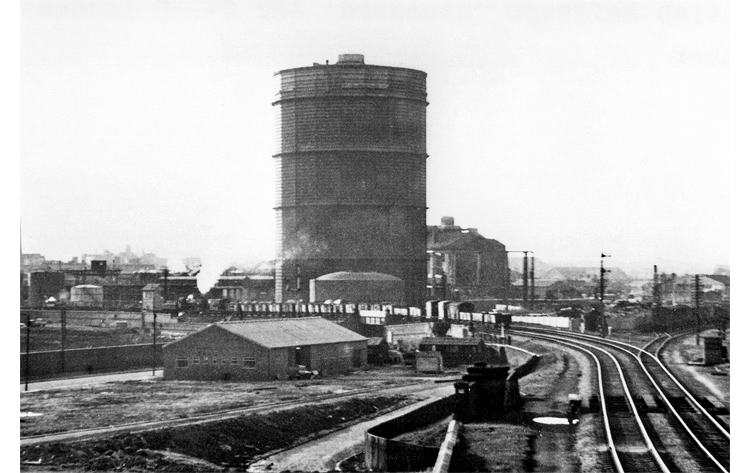
Photographer unknown. From the David Ingham Collection. (To view more of David’s excellent and extensive Flickr photostream click here )
Not directly related to the Widnes to St Helens line but worthy of mention is the fact that on the 21st May 1868 the LNWR their Bridge across the Mersey at Runcorn Gap. By the 1st April 1869 it formed part of a through route between Liverpool and London. The Garston extension line east of Ditton now took on a far more important role. A new station opened at Ditton on 1st May 1871. It became known as Ditton Junction and would become the terminus for St Helens line trains.
The opening of the ‘Deviation’ effectively marked the completion of major developments concerning the Widnes & St Helens line at Widnes apart from minor works related to factory sidings which would constantly be opening, closing or being altered. Other lines would open through the town including the Cheshire Lines Committee Railway (CLC) which opened in 1873 and provided stations at Hough green and at Farnworth. The latter resulted in the LNWR changing the name of its Farnworth station to Farnworth & Bold to avoid confusion. In 1879 the Sheffield and Midland Joint Committee opened their Widnes Branch which connected to the CLC at Hough Green and Barrows Green. They opened a new Station at Widnes Central very close to the LNWR Widnes Station and latter in 1890 another at Tanhouse Lane.
On the 1st October 1911 the LNWR opened a new Station Halt at Ann Street. They put on additional trains that ran between Ditton Junction and St Helens. The service became very popular and was nicknamed by local people as the ‘Ditton Dodger’ a name that is still recalled today.
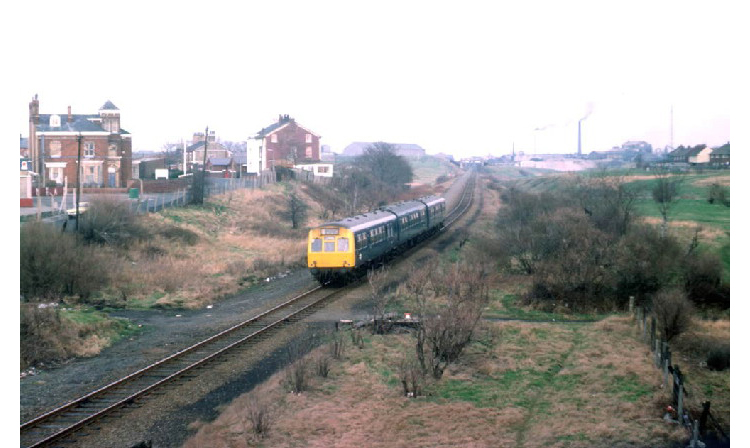
The London Midland & Scottish Railway 1923 – 1948.
On the 1st January 1923 hundreds of private railway companies were merged into four private companies at the instigation of the Government which wanted to simplify matters for industry and passengers. The Widnes to St Helens Railway became part of the London Midland & Scottish Railway (LMS). Within a couple of years the LMS had stamped its brand on the line by changing station signs and introducing new liveries to locomotives and coaches but otherwise things continued to run much as they had in LNWR days. Tens of Thousands of tons of freight continued to pass up and down the line and the ‘Ditton Dodger’ passenger service remained popular with local people who considered a 25 minute journey from Ditton Junction to St Helens to be most convenient. Excursions, including Rugby League Specials also ran along the line. Every Summer Parishioners at St Ambrose Church in Halton View would walk to the nearby Appleton Station were they boarded an excursion train that would take them on their annual day trip and picnic.
During the Second World War the line was of national importance as it provided direct links to Docks along the River Mersey at Widnes, Garston and South Liverpool. Passenger Services were cut back during the war years to allow more freight trains to run. Trains carrying key workers and troop trains would have been common though throughout the war years.

Nationalisation, decline and closure 1948 – 1982.
On the 1st January 1948 the railways of Great Britain were nationalised and became part of the British Railways, later to become simply British Rail, network. The country’s rail network was exhausted after the Second World War and in a nearly bankrupt state. On the Widnes to St Helens line it was business as usual at first the only noticeable differences being a change of livery for locomotives and coaches and new signs at Stations. The ‘Ditton Dodger’ service had been reduced over the years and by 1949 consisted of only three trains in each direction in the morning and the same in the afternoon. A couple of daytime services ran on Saturday for shoppers. In 1951 notice to withdraw the ‘Ditton Dodger’ service was posted and despite local protest it was withdrawn on the 16th June 1951 and stations at Ann Street, Appleton and Farnworth & Bold along with others in St Helens closed to passengers.
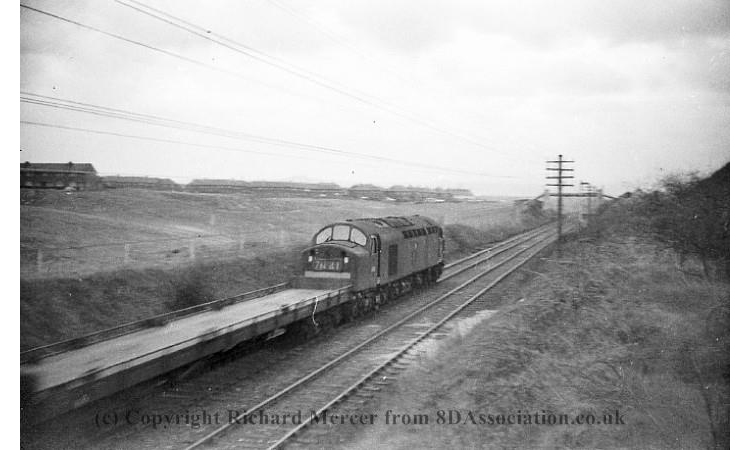
The line continued to be very busy with freight services, particularly coal which continued to run from the St Helen’s area to Garston Dock right up until November 1981. Serious decline started in the 1960’s. On the 10/09/1962 Widnes South Station, which had remained open to serve trains that ran between Ditton Junction and Manchester Oxford Road via Warrington Bank Quay Low Level, closed to regular passenger services. It served Rugby League specials up to 1965. Total closure of Widens South was on 31/03/1969 In 1964 the Widnes Engine Shed closed and locomotives were transferred to Speke or Sutton Oak in St Helens. On the 4th November 1968 the lines between Widnes Dock, now part of Spike Island, and Ann Street which had formed the original route into Widnes were taken out of use and lifted shortly afterwards. The original route of the Garston extension line which ran over the Waterloo Crossing closed in March 1969. Trains could now only go onto or come off the line to St Helens by using the Deviation line of 1869.
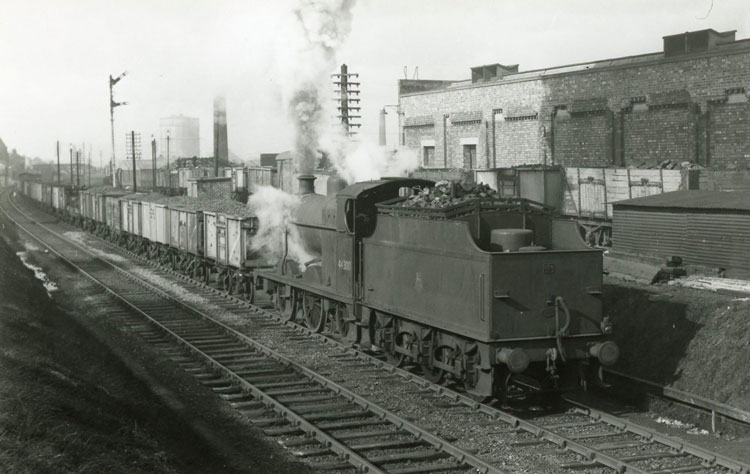
North of Farnworth and Bold the line was singled from the 14th December 1969. This meant that for a time the signalbox at Farnworth & Bold took on an important role as trains had to stop there to collect a token, or to hand it back, when going onto or coming off the single line section. In 1975 the line from Farnworth & Bold to Lugsdale Road was in turn singled and the Signalbox at Farnworth & Bold was closed and demolished. A Signalbox called Widnes Number 1 at Lugsdale Road now had to be stopped at by all trains to collect or deposit the single line token.

Many Widnesians will probably recall the last years of the line which had taken on an increasingly derelict air. Coal trains were still the most common site but also a train of cement wagons used to go up to the Everite Factory on weekdays. Other services included trains carrying cars from the Fords Halewood Plant and parcels services from Wavertree to Scotland. Occasionally diverted passenger services also ran along the line in its later years when other lines were closed for engineering. However traffic continued to decline and when the Everite no longer required a rail service it was considered that the line could close and what traffic was left could be diverted to other routes. The line closed to through traffic on the 1st November 1981. Sections of track was lifted at Farnworth & Bold to make a physical break. Early in 1982 the track was lifted from a point just to the north of Halton View Bridge up to Clock Face in St Helens.
For a couple of months a train continued to run as far as the Widnes Number 1 Signalbox at Lugsdale Road. It then took a spur, which had been opened as recently as 1961, and connected to the goods yard at Tanhouse Lane which by 1982 only served the Blue Circle Cement Works. However on the 18th April 1982 a new spur was opened between Tanhouse Lane and the Ditton to Warrington Deviation line. This allowed the last section of the Widnes to St Helens line at Widnes to close. It was lifted shortly after.
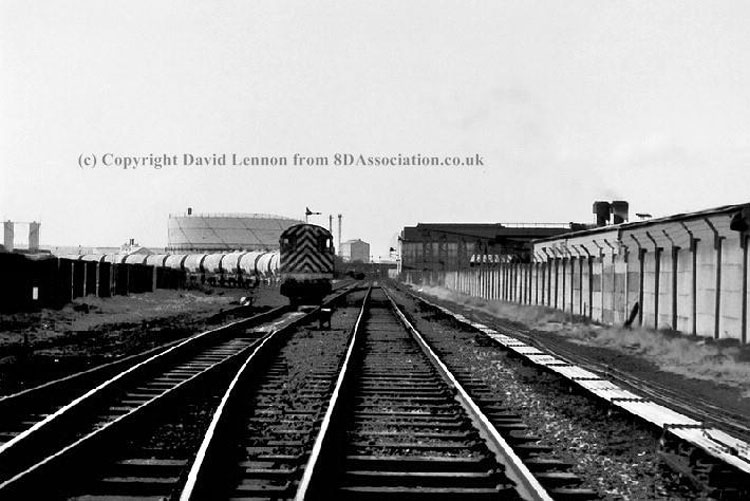
Photo by David Lennon. (To view more of David’s interesting Flickr photostream click here )
At the St Helens end of the line a short section of the route remained open from Sutton Oak Junction to Sutton Manor Colliery and traffic remained regular until the miner strike of 1984/85. The final train to run was noted as 15th August 1987 removing the last remaining coal from the site following that the line was closed and lifted by 1990. The section from Sutton Oak to St Helens (Shaw Street) was closed on 27th May 1989 being lifted by the end of the year to a point just north of Baxters Lane to serve the Hays Chemical works.
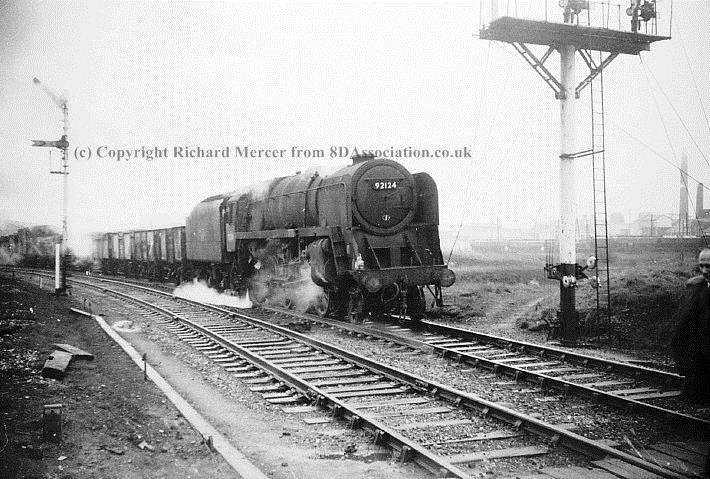
Today.
Today the route of the Widnes to St Helens line at Widnes mostly lies buried under Watkinson Way. The Garston to Warrington line 1969 Deviation can still be seen although a new bridge was provided at the point where Watkinson Way now passes under. The remains of Widnes South Station which was located on Victoria Road are still quite evident and the platforms can be seen when driving towards the north along Watkinson Way from the bridge.
The park at Spike Island contains the largest proportion of surviving artefacts relating to line including the original Widnes Dock and the site of the swing bridge which carried the line across the canal. The bridge itself was removed in the early 1980s during the parks construction. The site of the original Runcorn Gap Station which lasted from 1833 to 1852 is within the park, it was located just to the north of the canal where the swing bridge base can be seen.

On the 1st January 1948 the railways of Great Britain were nationalised and became part of the British Railways, later to become simply British Rail, network. The country’s rail network was exhausted after the Second World War and in a nearly bankrupt state. On the Widnes to St Helens line it was business as usual at first the only noticeable differences being a change of livery for locomotives and coaches and new signs at Stations. The ‘Ditton Dodger’ service had been reduced over the years and by 1949 consisted of only three trains in each direction in the morning and the same in the afternoon. A couple of daytime services ran on Saturday for shoppers. In 1951 notice to withdraw the ‘Ditton Dodger’ service was posted and despite local protest it was withdrawn on the 16th June 1951 and stations at Ann Street, Appleton and Farnworth & Bold along with others in St Helens closed to passengers.
